I’m quite familiar with Canarsie and Flatlands — these neighborhoods in southeast Brooklyn were quite accessible to the Bay Ridge boy just by bicycling east a few miles, which I did readily in my years before moving to Queens in 1992. While these neighborhoods look essentially the same as they did in the 1970s and 1980s, with no new major construction, demographics have changed quite a bit, shifting from mostly Irish and Italian (many classmates at alma mater St. Francis College were from eastern Brooklyn) to mainly Caribbean and African American.
For years, I read, Canarsie was the butt of jokes by vaudeville and Borscht Belt comedians because it was considered a backwater. Much of Brooklyn east of Coney Island and south of Flatbush did not get fully built up until the post World War II era. While there were business districts and shopping strips, there were also regions still devoted to farmland as late as the Fab Fifties. Some of the rough edges still haven’t rubbed off, as you will see on this page, though southeast Brooklyn is now urbanified through and through.
Canarsie and the neighborhood of Flatlands were once part of the Kings County Town of Flatlands, which Dutch settlers had originally called Nieuw Amersfoort, after the Dutch city. When the British assumed control in 1664 they called it Flatlands for its non-hilly topography. The town center was at Flatbush Road (Turnpike) and Kings Highway (see below). Ultimately all of Kings County’s towns were annexed to Brooklyn by 1896, and Brooklyn was consolidated with NYC in 1898.
GOOGLE MAP: CANARSIE TO FLATBUSH
After getting off the L train alluded to on this FNY post, I set off north on Rockaway Parkway, one of the original roads that led out of Canarsie to the next town to the north, New Lots.
For me The Jerry Building, on Rockaway Parkway just north of the train, is one of the great treasures of Canarsie. It presents a huge facade of gleaming white terra cotta. Undoubtedly, the person who built it was a Jerome. Most Geralds abbreviate their name Gerry, with a G. I’m sure they exist, but I don’t know of a Jeremiah who called himself Jerry. The Lamentations of Jerry? I don’t think so.
Canarsie still has numerous signs of former trolley service, including trolley poles along Rockaway Parkway and Glenwood Road that today are mainly used to hang traffic signs. In an unusual situation, for a couple of decades up to 1942, a trolley line was the extension of the Canarsie subway route, running in a private right of way between East 95th and 96th Streets southeast to the waterfront. In addition trolley routes Nos. 9 and 14 ran down Rockaway Parkway until May 27, 1951. The city has never gotten around to removing the poles that held the overhead trolley wires.
If you look at maps of Canarsie from the 1890s or so, the area in no way resembles the street grid found today. There’s just what became Rockaway Parkway, Conklin Avenue, Canarsie Road (East 92nd) and some east to west farm to market roads, and lanes leading to churches and schools. Back then Canarsie was truly a small town, a backwater in the shadow of the big city.
One of those east-west lanes is Smith’s Lane, which once ran continuously for a few blocks, but today exists as a piece here and there. THIS piece, off East 95th and marked by a wood sign nailed to a telephone pole, exists only because one house (seen in the above picture, a white house with a red roof) is still located on it.
St. Albans Episcopal Church, Farragut Road and East 94th, appears as if it could have been a private dwelling at one time and became a church later.
One of the Brooklyn mysteries that will have to remain unsolved until I get more information is why Avenues F and G were renamed Farragut and Glenwood Roads. Farragut is likely named for the Civil War Union Admiral, but Glenwood? (A small piece of Avenue F is still in place in Kensington, and Avenue Q became Quentin Road after Teddy Roosevelt’s son Quentin was killed in World War I).
ForgottenFan Ron Schweiger:
Cornerstone Christian Educational Ministries, around the corner on East 94th, was definitely once a private home. I have always been a fan of ecclesiastical lettering — look at the flourishes on those C’s.
Most of Canarsie was developed late enough so that most of its houses, from the post World War II era, are free standing on grassy plots. Occasionally, though, you see rows of attached houses like these on Foster Avenue from East 92-93rd streets, that were likely developed a few years on either side of World War I (1917-1918).
You won’t find an Avenue E in Brooklyn. Its place is taken by Foster Avenue, which runs continuously from the F train el in Parkville all the way to the cut for the Canarsie Line, though it makes an odd jog at Kings Highway, where it continues east a full two blocks south. Whoever drew up the Brooklyn street layout, especially in the southeast, was smoking serious peyote.
While Avenues F and G were renamed decades ago, Avenue D (along with J, K, L, M, N) run into Canarsie while keeping their letters. However, several miles west in Ditmas Park, Avenue D is called Dorchester Road.
On a building that still distributes wholesale soda pop and beer at Avenue D and East 92nd, a No-Cal soda ad has been permitted to remain. No-Cal, which originated in 1952, sprang from Russian immigrant Hyman Kirsch’s desire to market a sugar-free carbonated beverage for diabetes patients. At the height of its popularity, actresses Kim Novak and Julie Adams appeared in commercials. As Coca-Cola’s Tab and Diet Pepsi cut its sales, No-Cal was out of business by the 1970s.
Nolans Lane, running from East 94th to 96th Streets near Foster Avenue, is another of Canarsie’s obscure east-west alleys. So obscure, in fact, that its single mercury-bulb light has been allowed to remain despite a wholesale replacement of NYC street light luminaires in 2009. More on Nolans Lane here.
The road was named for John H. Nolan, who was known as the Little Drummer Boy in the Battle of Cedar Creek. He later became an undertaker and managed Canarsie’s first funeral establishment, a branch of L. Ruoff and Sons. He is buried in Canarsie Cemetery, where an elaborate monument recounts his role in the skirmish. Linda Steinmuller, Canarsie Courier
East 92nd Street (seen here south of Foster) boasts several buildings that are a little older than those on other streets. That’s a hint that it was in heavy use earlier than its surrounding streets. Its path is part of the colonial-era Canarsie Lane, which ran from what is now Lefferts Gardens to Canarsie; pieces of it, like East 92nd, are still in place, including Cortelyou Road south of Holy Cross Cemetery. South of Avenue M Canarsie Road slices away from the overall numbered grid and still possesses its old name. The apartment building was likely built after the old Canarsie steam rain was converted to electric powered trains under the Dual Contracts purchase in the 1910s, and Canarsie became more accessible for commuting to Manhattan.
SCHOOL LANE, a short lane between East 89th and Remsen just north of Glenwood Road.
From my Canarsie nighborhood page:
Before Remsen Avenue existed, children walked to P.S. 114, a wooden schoolhouse, through School Lane, which ran alongside of “Pop” James’ Grocery and Candy Store. School Lane was originally known as Cobb’s Lane – a corruption of Kopf’s Lane, named for Peter Kopf, who owned a grocery store on East 92nd Street, and was known locally as “Honest Peter.”
The schoolhouse was destroyed by fire in 1907, and temporarily moved to Harms’ Hall – a place where minstrel and Punch & Judy shows performed – on Rockaway Parkway and Smith’s Lane. P.S. 114, which recently celebrated its centennial anniversary ( see June 21 issue at canarsiecourier.com ) was built in 1912 on Remsen Avenue and Glenwood Road. Linda Steinmuller, Canarsie Courier
At the SW corner of Conklin Avenue (one of Canarsie’s oldest roads) and East 92nd Street is the American Legion Memorial, constructed, as its cornerstone says, in 1929. On the front lawn is Canarsie’s war memorial, dedicated in 1970.
CANARSIE COMMUNITY REFORMED CHURCH, Conklin Avenue and East 93rd. The congregation known today as Canarsie Community Reformed Church can trace its roots back to 1876 when the Rev. John Conrad Dickhaut founded the Flatlands German Evangelical Church. Over time, the German language was discontinued and the group became known as Canarsie Reformed Church. American Guild of Organists
Information on Brooklyn’s one and only log cabin on the NE corner of Flatlands Avenue and East 93rd (now a real estate office that has done its dangest to hide the unique log cabin details behind garish signage) is sketchy at best. The cabin was built by Lloyd Doubleday Senior in 1936, and it was run as an ice cream parlor for many years.
Some digging on the internet has turned up a site by a Canarsie old timer called Buddy Chai, who has a whole page on the cabin, as well as some interior photos. Enjoy.
Walking this route in early October, I spotted directly across Flatlands Avenue a house on the corner with a storeroom full of Christmas decorations and moving figures. Christmas music blasted through a loudspeaker. A passerby mentioned that the owner does a large Christmas display every year.
The spread is owned by a former Brooklyn assemblyman named Frank Seddio and, as luck would have it, it goes “live” today, December 4, 2011 as I write this:
A 48-year-old Canarsie holiday tradition is going blue this year when the Smurfs make their dazzling debut in front of Frank Seddio’s holiday-decorated home.
The magical, mushroom-inhabiting critters will spend the days skating in front the home on Flatlands Avenue — a heartwarming, $300,000 slice of Yuletide kitsch that promises to brighten the block and beyond when it’s illuminated with 50,000 twinkling lights on Sunday…
The former assemblyman and surrogate court judge — and his elves — have decked the halls since 1986, continuing a tradition started in 1963 by the home’s previous owner, Frank Guarino.
This year, the cast of 100 animated characters includes a new, singing-talking-joke-cracking parrot, and Stumpy, the fan-favorite talking Christmas tree. Eight wondrous displays feature vignettes depicting Hanukkah and Kwanza, and there’s a 12-foot wreath crowning the roof that “can be seen by airplanes landing at Kennedy Airport,” Seddio said. Brooklyn Daily
A very modern funeral home, Guarino of Canarsie, at Flatlands and Remsen. Information on funeral homes, as with some churches, is sketchy on the world wide web, but I don’t think it would be a wild guess this Guarino has something to do with the Guarno mentioned above, who started the Christmas tradition.
St. Matthew’s Lutheran Church was originally constructed on Canarsie Road, now East 92nd street about 1880 and has, I gather, survived a relatively recent damaging fire.
The spire of old Grace Church, the tallest building in Canarsie until the campanile of Holy Family Church on Rockaway Parkway surpassed it, looms on East 92nd Street south of Avenue J. According to more than one account, Grace (now affiliated with the Methodists) was built in 1839 though I’d have to take that with a bit of salt.
Bureau of Sewers
Canarsie is vast — much larger than the maps indicate that it is. Since my goal was Flatbush, I demurred exploring further south and lit out southwest down Flatlands Avenue, a horn honking, cacophonous main drag and bus route to East Flatbush, where it meets Avenue N.
At Ralph Avenue and Flatlands, there’s a handsome brick building with arched windows, with entablature proclaiming it to be a part of the Bureau of Sewers (now undoubtedly a part of today’s Department of Environmental Protection. It’s lined up at the present headwaters of Paerdegat Basin, which used to extend as Bedford Creek well into East Flatbush before it was redirected into the sewer system. There are also a group of streets in Brooklyn with the name, which is close to the Dutch for “horse gate.” Possibly, horses were watered using the creek in the colonial era.
Some more Dutch for you: the Brooklyn seal, shown on the entablature, contains the words Een Draght Mackt Maght, or, “Unity Means Strength.” Also shown is a young woman carrying bounds sticks called fasces, representing government (the fasces symol also appeared on the back of the “mercury” dime from 1916-1945.
For reasons known only to the DEP, the entrance to the parking lot for decades was accompanied by an old bishop-crook lamppost. That post was removed but the tradition continues with this replica post.
The Arch Diner, opposite the Bureau of Sewers on Ralph Avenue, is a relatively new addition to NYC’s diner canon — it’s a 1990 DeRaffele.
Into Flatlands
I turned south on East 53rd and Flatlands (for reasons you will see below) and saw, before attaining my quarry, several species of modern NYC housing.
In Brooklyn you occasionally see a house set way back from the curbline, with an expansive lawn. They’re probably quite old and were there before the area streets were laid out. (In Flatlands, the street grid was built from the 1920s-1950s and in Bergen Beach, wasn’t finished in some areas till the 1990s!)
The encroachment of the Fedders Special, beloved by outer-borough developers because they’re cheap to build, is happening all over NYC — even in Marble Hill, Manhattan. They’re marked by concrete lawns, rusty fire escapes and a hatred of vegetation.
This stretch is definitely post WW II, possibly as late as the 1960s. Garages in the basements do allow for some green lawns in the front. One gent emerged and asked why I was taking pictures and was satisfied by my reasons. Your paperz pleaz!
A nice pair, East 53rd south of Avenue L.
I walked down east 53rd because I wanted another look at #1587, between Avenues M and N. You will notice that it seems turned away from the street, with a lengthy dormered section on the side. There are older pictures of this house all alone in an open field.
It was built by a Douwe Stoothoff, a Dutch immigrant, sometime around 1800. In 1828 it was sold to John Williamson, whose son, Garret, became a prominent rhubarb farmer in the area. The house was moved to its present location as the street grid was built through in the early 1900s. Over the years, a succession of owners have done their best to disguise it so that you wouldn’t recognize it as a colonial-era house.
Pastosa Ravioli, Avenue N and East 53rd. I have always admired Italian pasta shops because of the shade of light green used on the signage along with the red (that’s now faded here). This is a relic of Flatlands’ once more prominent Italian-American population.
At Avenue N and Utica Avenue there’s a large parking lot on the corner, but there are also a couple of former trolley poles with lamps mounted on them, marking he space as a trolley turnaround. Avenue N was a main route for trolleys heading to Bergen Beach (#41) and on Utica Avenue (#46). Both routes were converted to motor buses in 1951, which was a tough year for the Dodgers and for trolleys.
Power Playground, across from the old trolley lot, features a beautifully rendered flag on the handball wall. The park was named for a local luminary in the 1950s, Marshal Power, who died at age 35.
Seeking another colonial-era house I headed north on East 48th.
Attached homes with porches, likely from the Roaring 20s.
Smaller homes and grassy plots mark these as from the early 20th Century.
No doubt, a stucco fan.
At 1640 East 48th, near Avenue M, is the Stoothoff-Baxter House. It was purchased, or inherited, by Irish immigrant John Baxter in 1796 after previous owner Garret Stoothoff passed away. By 1812, Baxter had added the larger part of the house.
This is the smaller part of the house that, according to the historical plaque, was built in 1747 by Elberts Stoothoff, though I suspect that’s somewhat too early. The house was moved to its present location around 1900 when the street grid was introduced. According to this real estate website, the surrounding homes date to the 1940s.
Flatlands Village
I walked west on Avenue M toward Flatbush Avenue and the heart of the old Village of Flatlands. There’s a lot of history and admirable architecture where Flatbush and Flatlands Avenues, Avenue M and Kings Highway are concentrated.
Harden Street is a narrow lane running south from Lott Place across Avenue M to a dead end. If you angle the camera just right it looks like the country lane that it used to be. We will see another one later on.
At the northeast corner of Flatbush and Flatlands is a masterpiece with a classic Flemish-style stepped facade. I don’t know the history of the building but it was definitely part of a real estate development because similarly styled buildings are on the other side of the street. Older photos show a Manufacturers trust bank on the ground floor, and it’s still occupied by a Chase branch. A fire recently ravaged it, but it will be restored.
These are the lookalike buildings on Flatbush Avenue I had mentioned.
An Art Deco era chiseled sign marks the former Prudential Savings Bank.
Moving west to Flatlands Avenue, Avenue M and Ryder Street is Father Kehoe Triangle, named for a longtime pastor at nearby St. Thomas Aquinas Church.
In the first eight years of his service as pastor of St. Thomas Aquinas, Father Kehoe established the new school, convent, rectory, and church building. The gothic inspired church building, completed in 1930 was the crowning point in Father Kehoe’s career. Throughout these years the parish grew from 700 parishioners to a burgeoning 7,000 members with an ever-growing waiting list. In addition to the new buildings, Father Kehoe was instrumental in helping the poor members of his community during the Great Depression. He founded a parish unemployment bureau with a guaranteed $20,000 per year funding. This bureau was responsible for securing $5 million worth of employment for local residents.
Father Kehoe used his spare time to organize the local boy scouts, fife and drum corps, and girl scouts. He also assisted in obtaining funds and securing construction for five churches other than his own: Resurrection Church, Good Shepherd Church, Our Lady Help Christians, St. Mary Queen of Heaven, and St. Vincent Ferrer. During his career he received an honorary Doctorate of Laws from St. Francis College and administered religious services to U.S. Navy troops based at Floyd Bennett Field during World War II in 1941. After serving as a priest for 47 years, Father James F. Kehoe died in 1943 at age 74. The funeral service was held at his parish, St. Thomas Aquinas. One hundred seventy-five priests were among those who paid their respect. NYC Parks
The Vietnam War memorial was inserted here in 1968.
Facing the Commander Eugene S. Sarsfield Playground is the Park Tavern, with its sign manufactured from wood pieces.
Here’s a Robinson Kings County atlas plate from 1890 that, fascinatingly, shows the Flatlands Village street layout as it was then, but also the future grid. Built roads are shown in purple, and I have helpfully added their modern names. Harden Street is the short stripe between Mill Road and Flatbush Road (now Avenue). Mill Road, once the main east-west route, has devloved over time and now exists in just a couple of pieces. Kings Hihway, of course, was expanded into a power route in the 1920s. Them there’s Lotts Lane.
Running south from Avenue M and Coleman Street is a short, unassuming dirt road. The city doesn’t mark it with a street sign, and no houses border on it. It comes to a dead end before reaching Avenue N. S the 1890 map shows, this is the only remaining trace of Lotts Lane, once a major farm to market north-south road for horses and wagons.
A block away on Hendrickson Street south of Avenue M are buildings associated with St. Thomas Aquinas parish, the first Catholic church in Flatlands village, established in 1885 (see map above, on which it appears). The original church building on Flatbush Road was replaced with the present Hendrickson Street campus in 1930; the original cast bell is displayed on the lawn.
Thomas was a [13th century] Italian Dominican priest of the Catholic Church, and an immensely influential philosopher and theologian in the tradition of scholasticism, known as Doctor Angelicus, Doctor Communis, or Doctor Universalis. “Aquinas” is not a surname (hereditary surnames were not then in common use in Europe), but is a Latin adjective meaning “of Aquino”, his place of birth. He was the foremost classical proponent of natural theology, and the father of Thomism. His influence on Western thought is considerable, and much of modern philosophy was conceived as a reaction against, or as an agreement with his ideas, particularly in the areas of ethics, natural law, metaphysics, and political theory. wikipedia
Next door, the convent associated with the parish is named for Saint Edith Stein, a Carmelite Order nun (converted from Judaism and later, atheism) who was martyred by the Nazis at Auschwitz in 1942. She was canonized by JPII in 1998.
The cross at the door has some odd (to me) imagery. Can anyone volunteer an explanation?
PS 207 was built, for God and country, in 1924. It was likely once associated with Aquinas, as even in 1924, public schools would never display a cross on the cornerstone.
3847 Avenue M, where it meets Flatlands Avenue. This is likely very old, possibly 19th Century (note the cupola, which one must have had nice views of surrounding countryside).
Flatlands Dutch Reformed Church and Churchyard
This church and its burial ground were established in 1654, with the present building (1848) the third on the site. During the Revolutionary period of British occupation of Long Island, Redcoats would enter the church for Sunday services and, in a Kings County that was still largely Dutch speaking, the Rev. Ulpianus Van Sinderen would berate them in a language they didn’t understand, subtly, so they wouldn’t suspect. The parish house dates to 1904 and the cemetery consists of burial grounds for Native Americans, free blacks, and Dutch congregants.
Hubbard Lane
Hubbard Place runs for two blocks between Flatbush Avenue and Kings Highway, but the eastern end, between East 40th and Kings Highway, is the older part, an original lane in the Town of Flatlands. In the above photo, the large, bland brick builing replaced the hsitoric Van Pelt House, first built in 1790 but allowed to fall apart in the 1990s and torn down by 2001.
But the west end of Hubbard Place, near Flatbush Avenue, also boasts some eclectic architecture, though the buildings have been tamed by siding.
Flatbush Avenue painted sign. In Broooklyn, CL stood for CLoverdale.
A mighty wraparound corner sign in orange and black for a plumbing concern at Avenue J and Flatbush Avenue.
I took a left on Avenue J and immediately found myself awash in orange-yellow, as I encountered 5 or 6 NYC cabs. Anyone care to explain this livery agglomeration here?
As we are nearing Flatbush/Nostrand, the terminal of the IRT 2 and 5 trains, larger apartment buildings begin to appear like this one at J and East 34th. An ancient handlettered sign advertsies Edelstein Roofing, which may or may not be still in business.
A final Dutch colonial-era house, on this tour at least, can be found at 1128 East 34th, between Avenues I and J. The Johannes Van Nuyse House very much resembles the Stoothoff-Baxter House shown above, with a much older smaller house constructed in 1744. The house was later owned or tenated by the Duryea, Magaw and Coe families and was moved to its present locale in about 1925.
At Avenue I and Flatbush Avenue is the edge of a very early residential development in Flatbush, Vanderveer Park, founded by Henry Mayer in 1892.
1655 Flatbush Avenue actually straddles the Bay ridge LIRR Branch cut.
Flatbush and Nostrand Avenues are two of the longest avenues in Brooklyn (the champion in length being Bedford) with Flatbush running from the Manhatan Bridge to the Marine parkway Gil Hodges Bridge, and Nostrand from south Williamsburg to Sheepshead Bay. Where they meet, just east of Brooklyn College, has been known to generations of Brooklynites as “The Junction,” even though you won’t find that name on street or subway signs. (Broadway Junction, where Broadway and Fulton Street, and a metallic tangle of elevated lines meet, is more formally recognized as a ‘junction.’)
It’s among Brooklyn’s busiest shopping districts, a continuation of Flatbush Avenue’s status as a retail district to the north. It’s also the southernmost reach of the IRT subway. The IND once palnned aline down Utica Avenue, but wars and depressions cancelled it.
And after 5 hours, I cancelled my Canarsie to Flatbush walk and jumped on the #5 train at the beginning of my journey back to FNY World Headquarters in Little Neck.
Photographed October 2011; page finished December 4, 2011

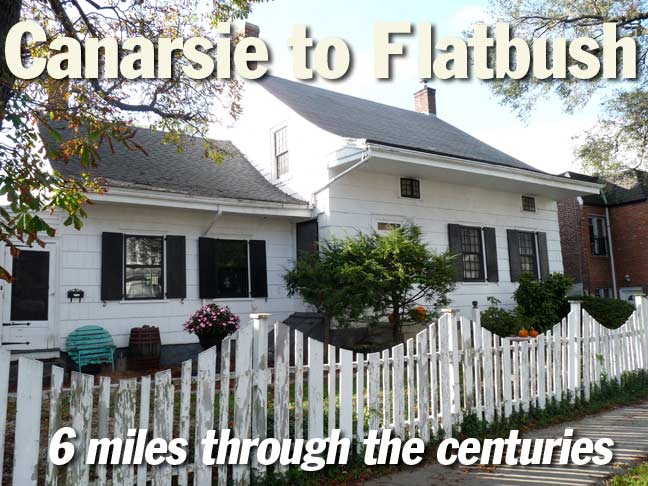
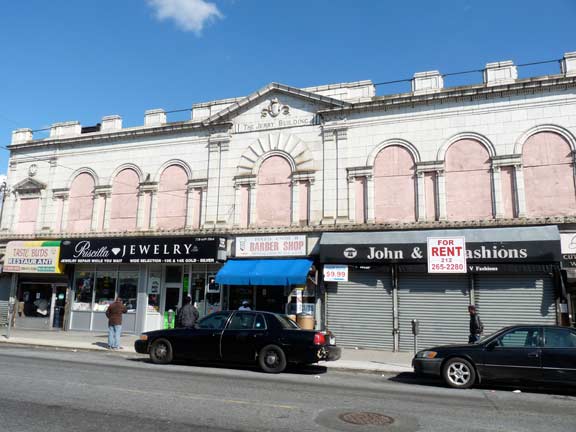
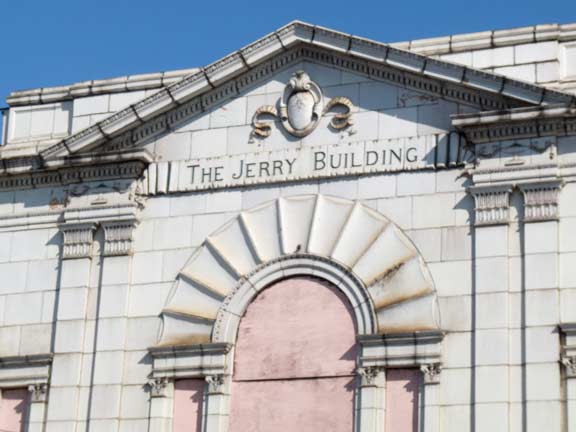
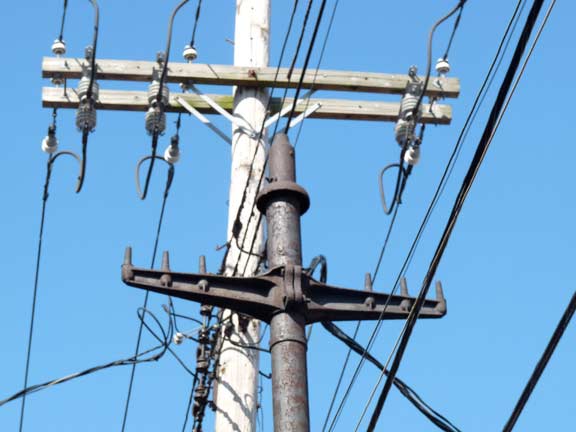
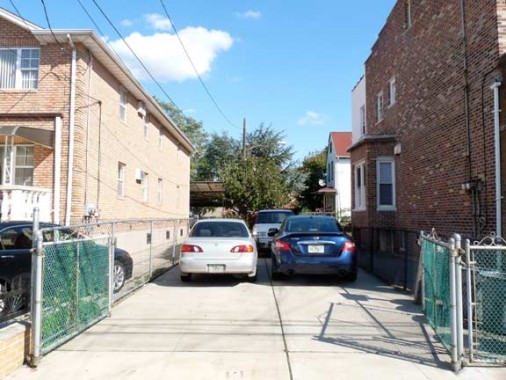
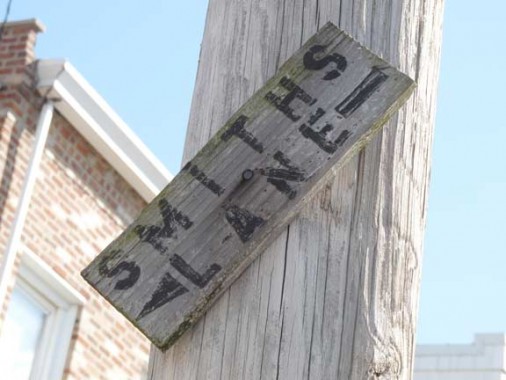
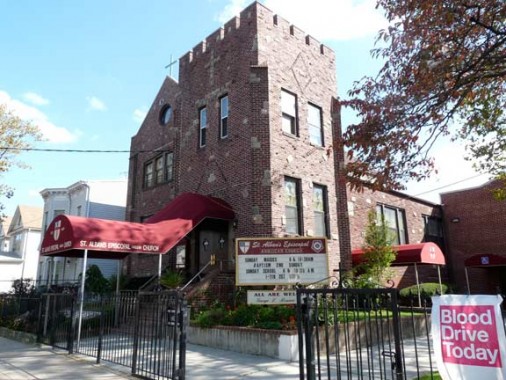
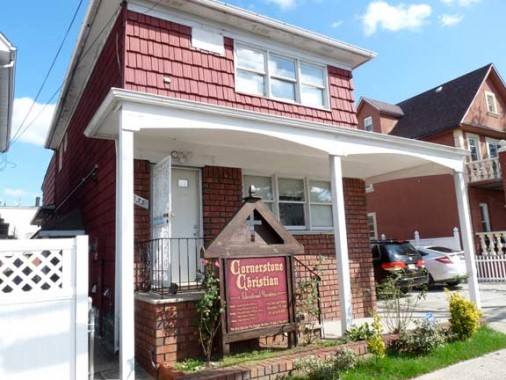

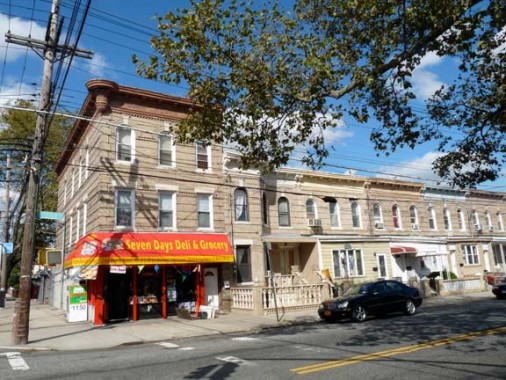
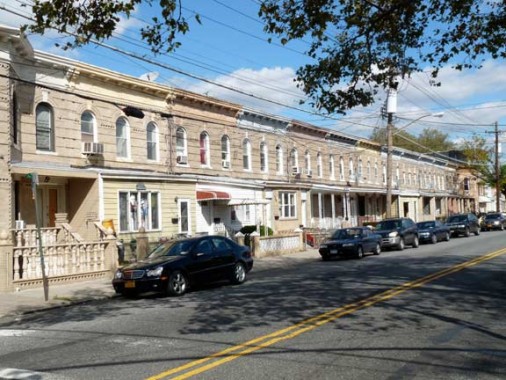
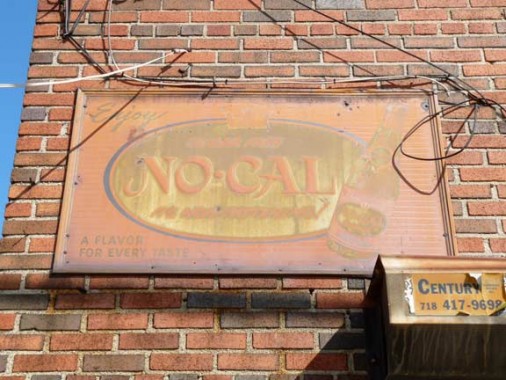
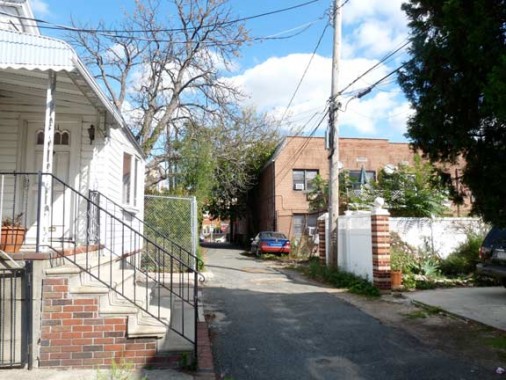
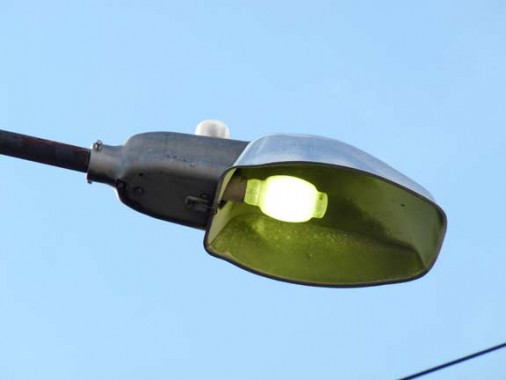
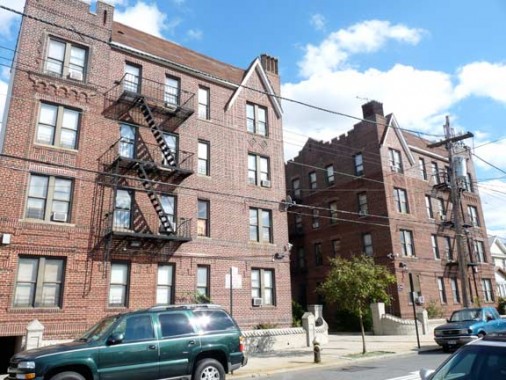
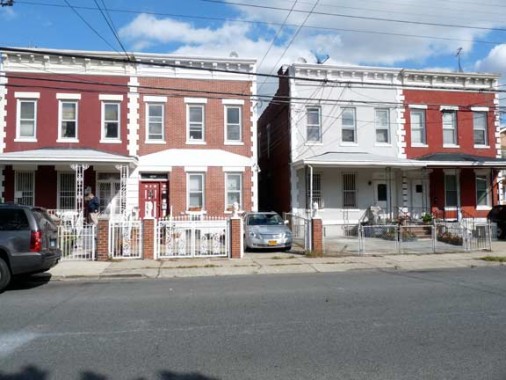
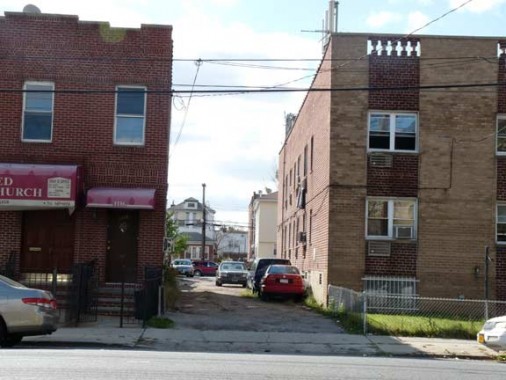
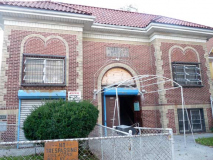
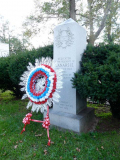
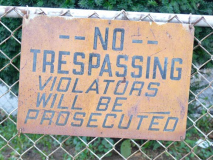
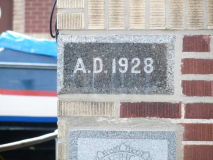
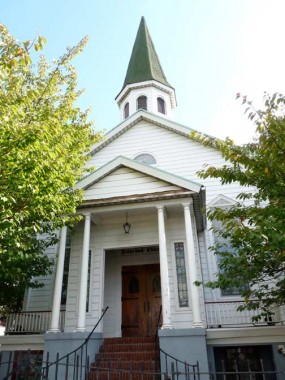
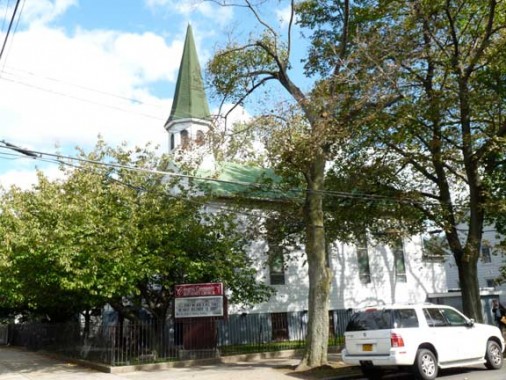
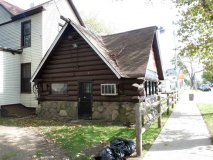
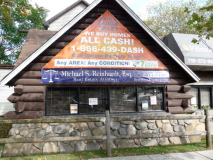
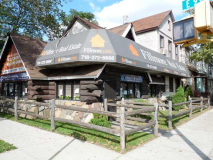
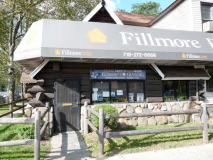

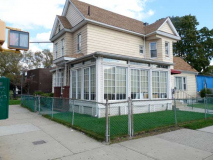
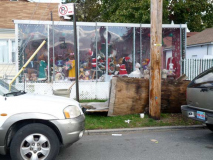
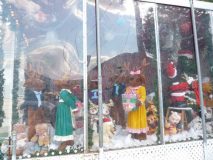


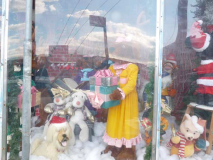
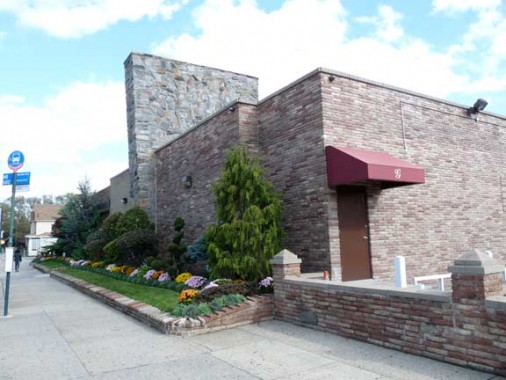
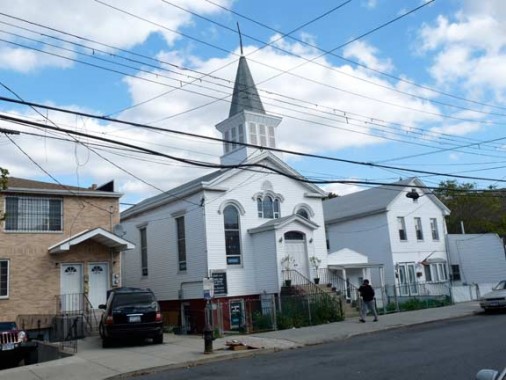
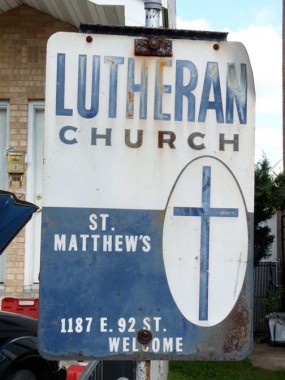
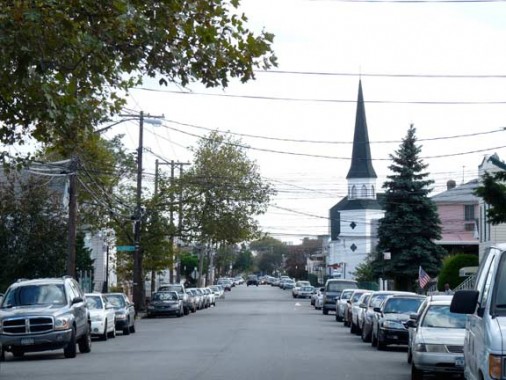

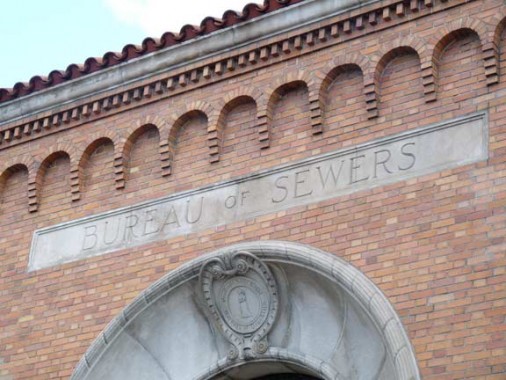
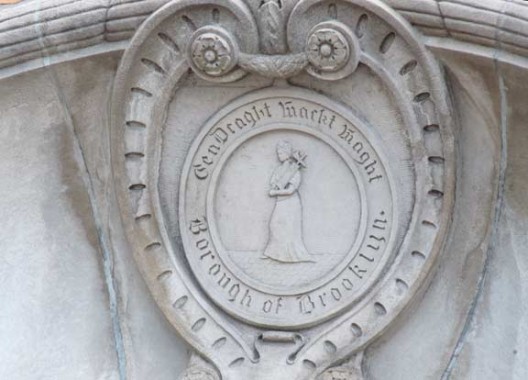
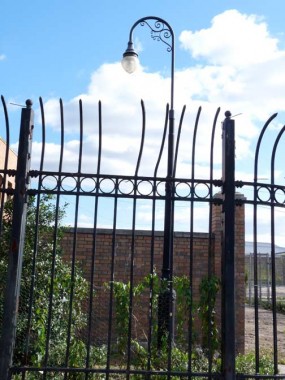
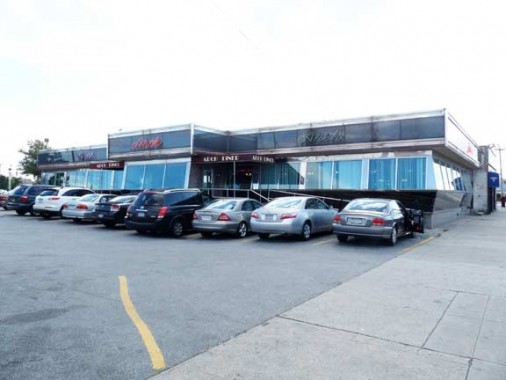
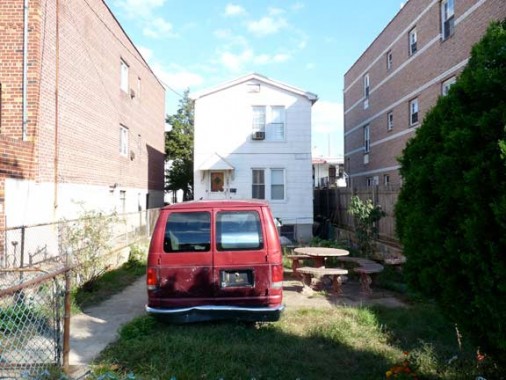
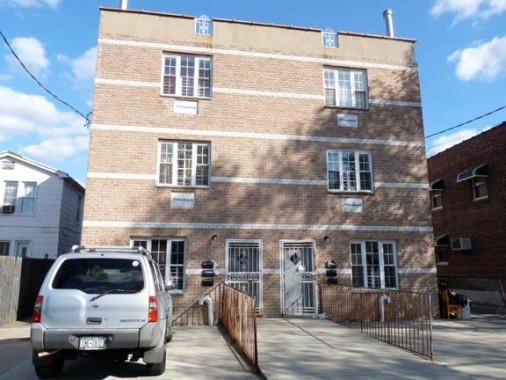
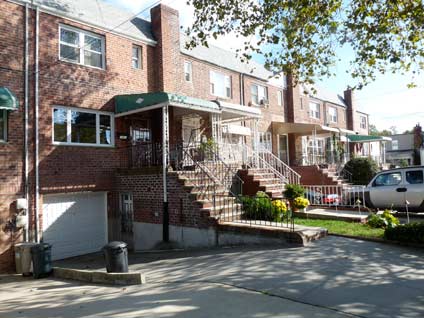
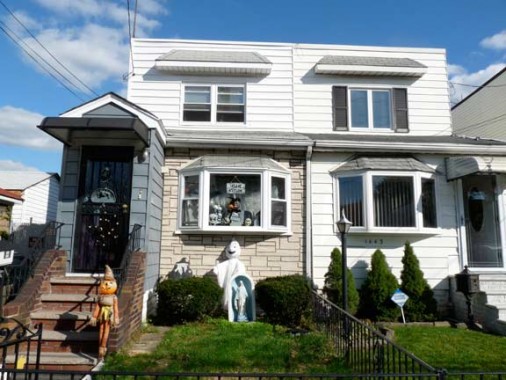
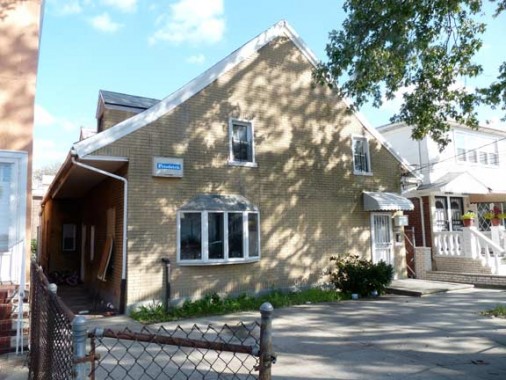
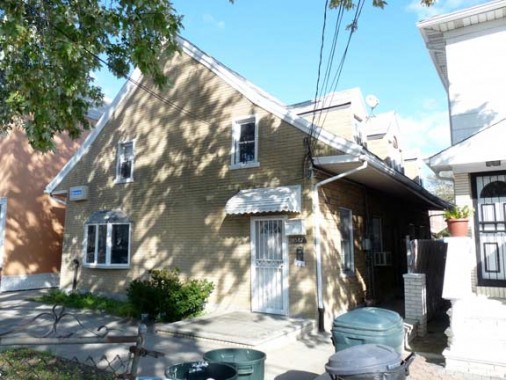
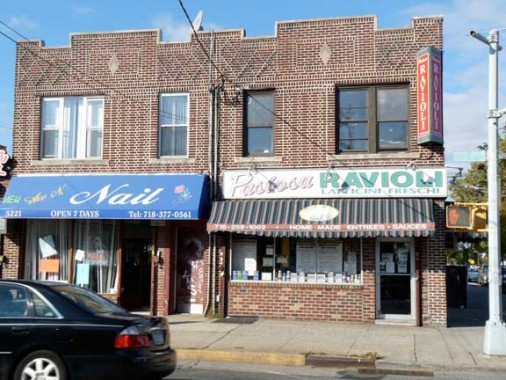

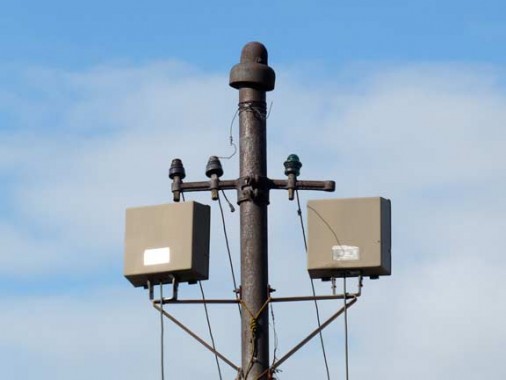
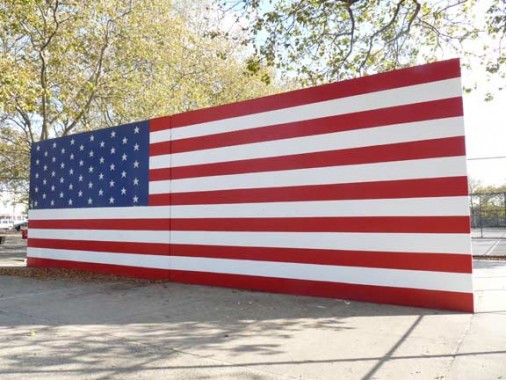
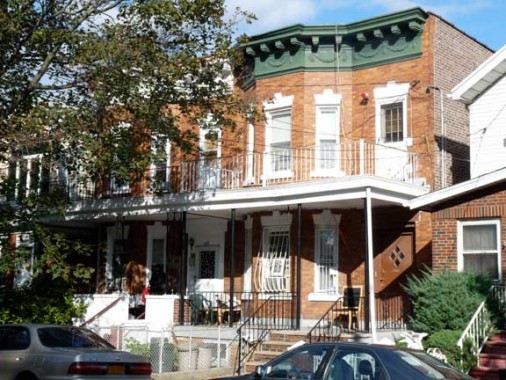
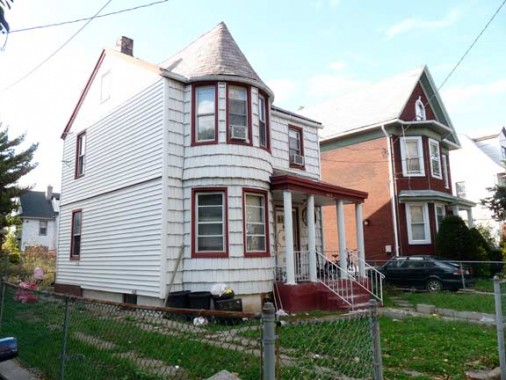
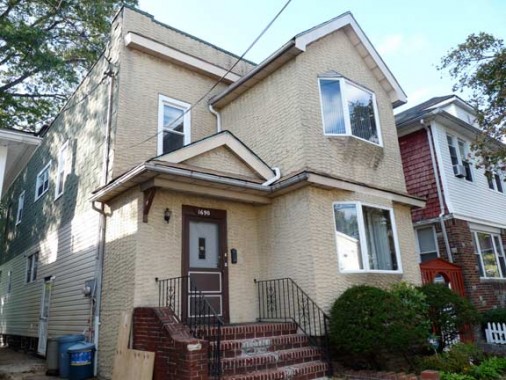
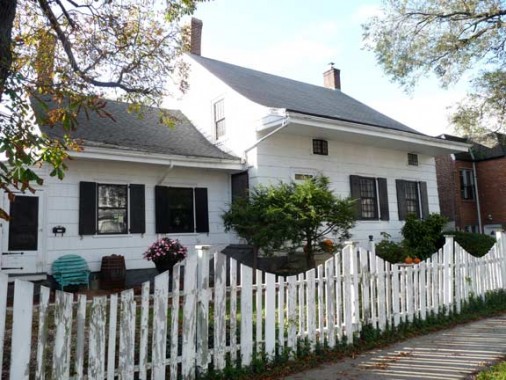
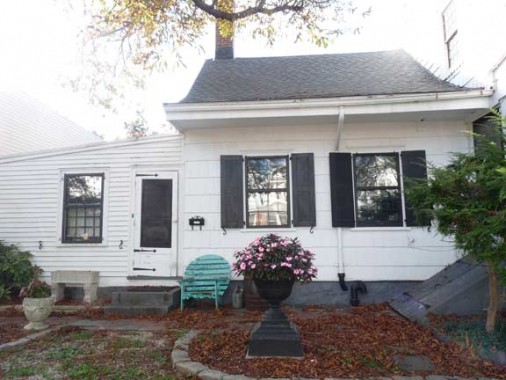
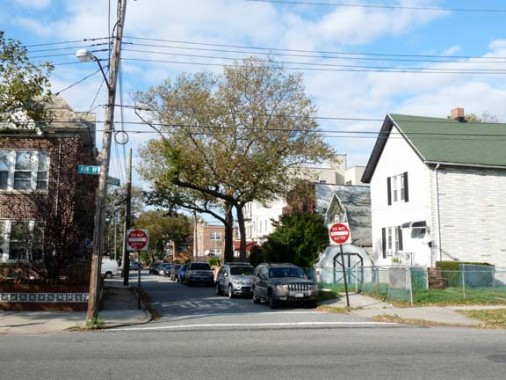
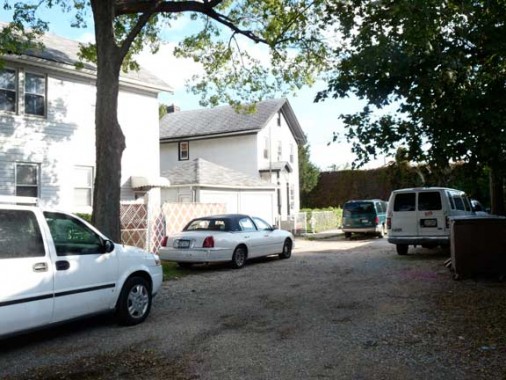
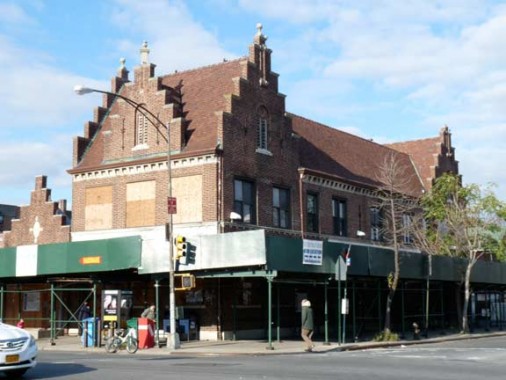
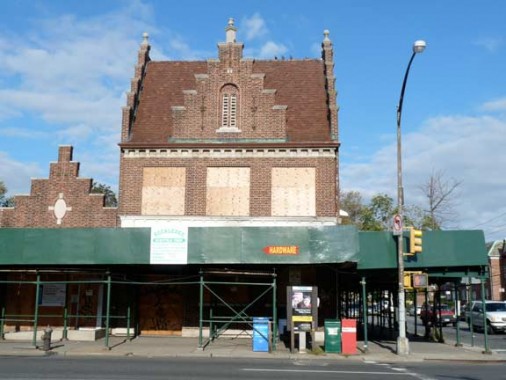
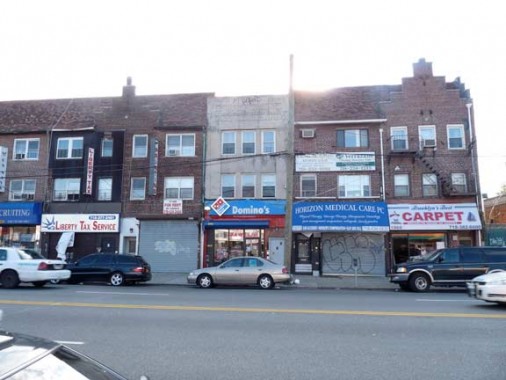

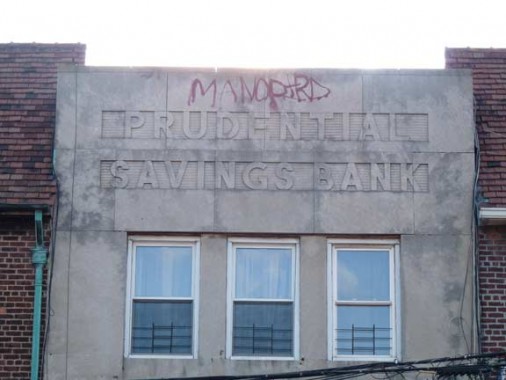

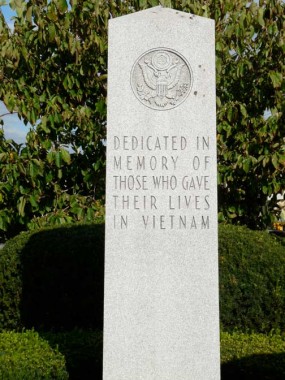
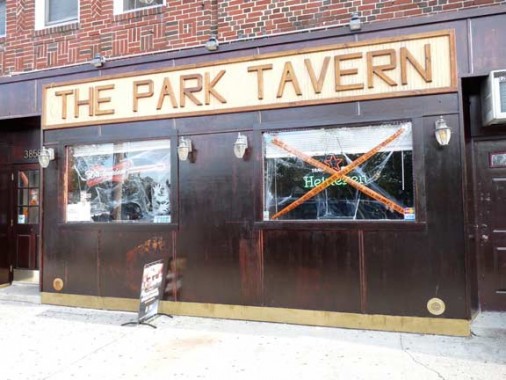
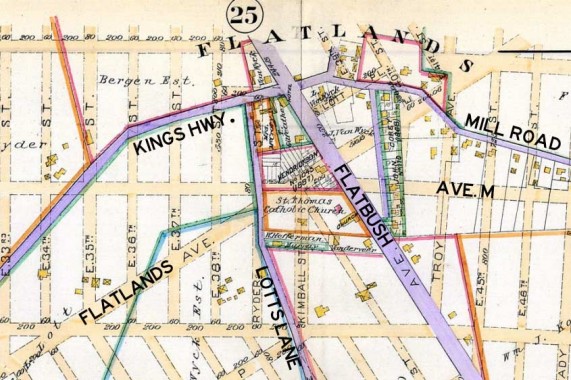
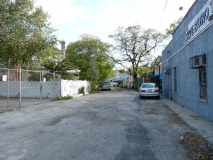
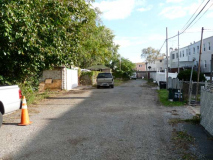
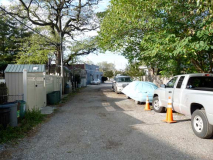

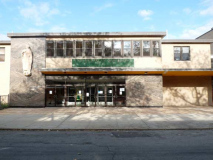
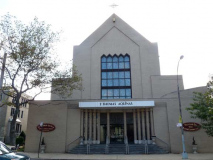
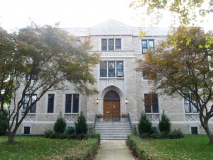
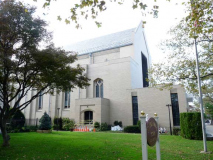
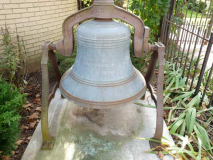
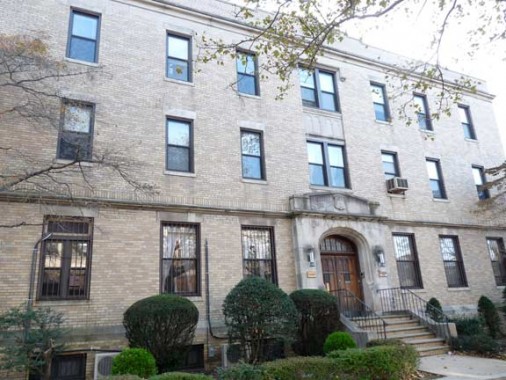
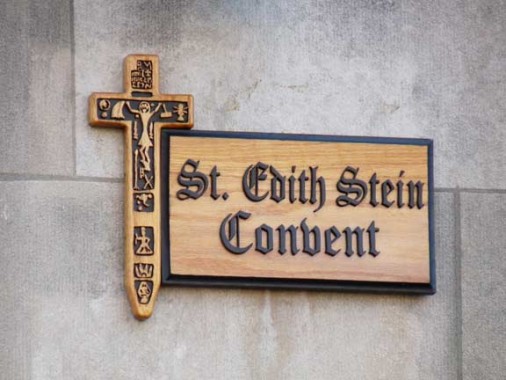
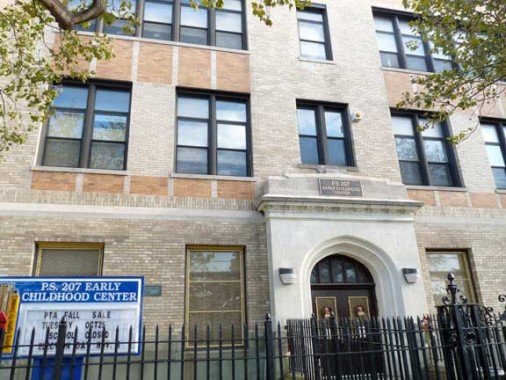
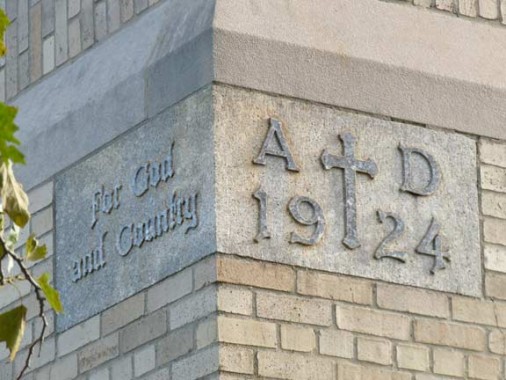
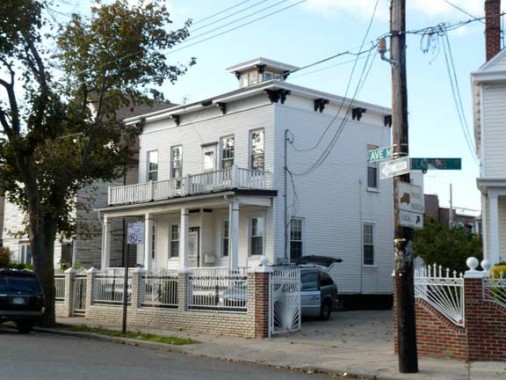
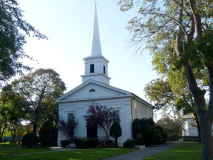
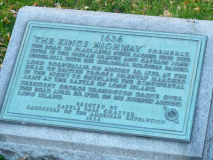

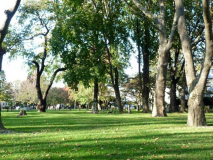
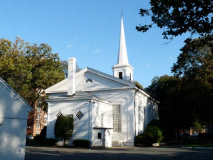
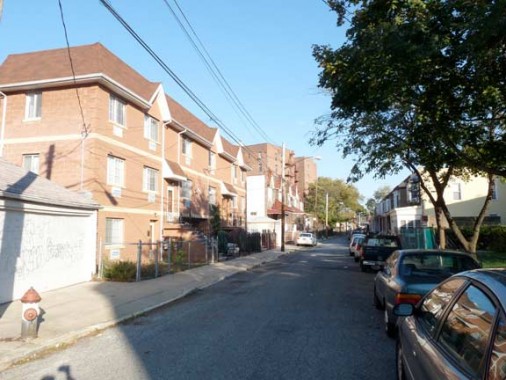
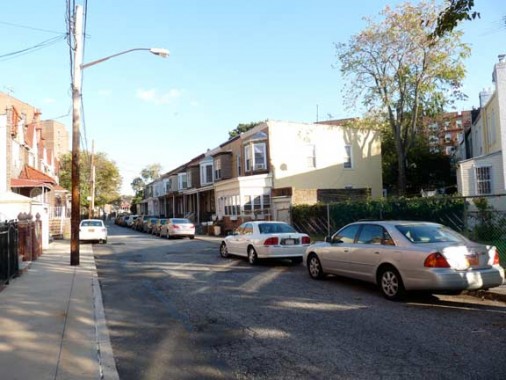
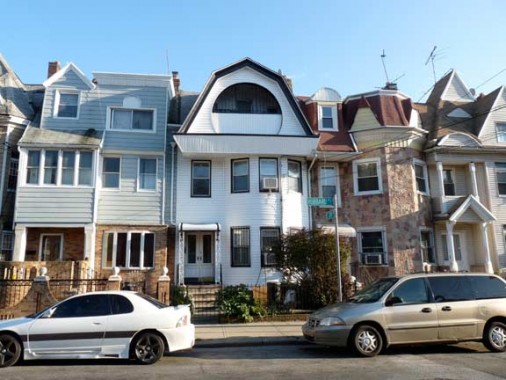
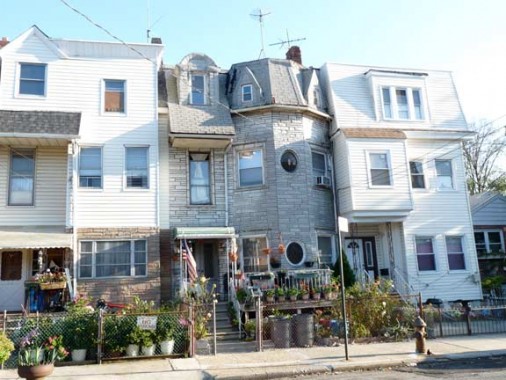
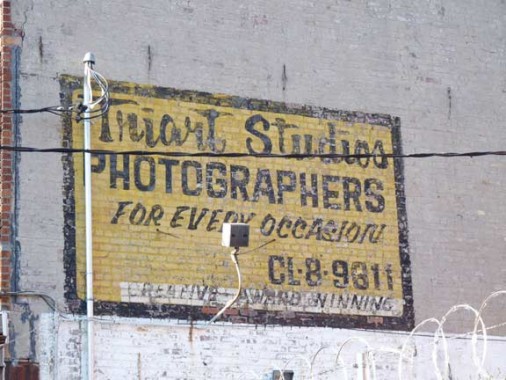

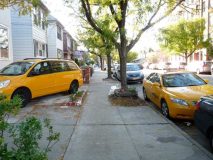
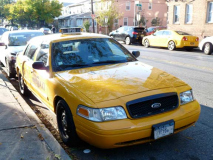
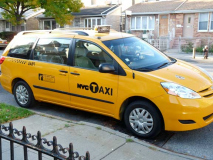
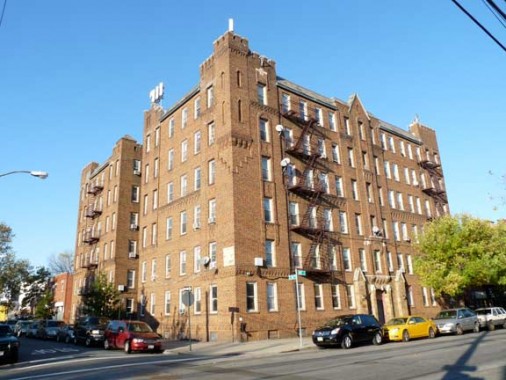
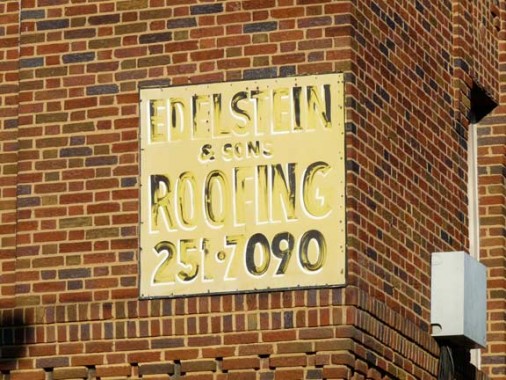
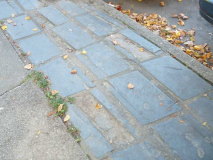
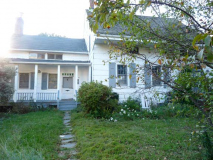
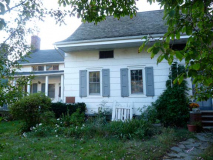
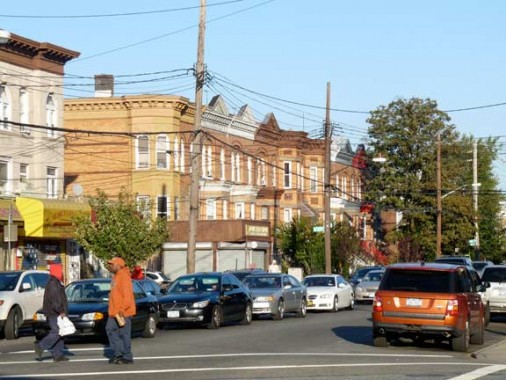
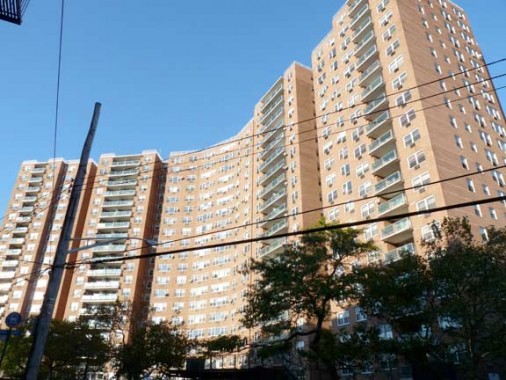


40 comments
That NO Cal sign is not only on a soda distributor, but this distributor is also the LAST home delivery service for the soda man maybe anywhere in the USA.
This is also the home of the ONLY remaining seltzer bottler in NY CIty. Gomberg Seltzer Works owned by Kenny Gomberg. He has bought up almost all of the remaining seltzer bottles that he could and also the machinery able to make this carbonated beverage. Do you remember the 3 stooges and othe comedians squirting seltzer in peoples faces???
Chance are, that the Howard family of the 3 stooges may have been serviced by Gombergs!
You go in and leave a $10 per bottle deposit and the seltzer is only $1 per bottle.
You can’t buy seltzer like this anymore. The screw cap stuff in the grocery stores does not have the pressure needed to make great egg creams.
I was an elementary school classmate of Kirsch’s daughter, Dixie in the early 50’s. at PS193 and Andries Hudde JHS 240. We were the first class to go through all 3 grades of the brand new Hudde – 1951-54. PS 193 is now the Gil Hodges school (corner of Bedford Ave and Ave L). Hudde is at the corner of Nostrand Ave and Ave K. Gil Hodges lived on E.32nd St between Aves K and L before moving to his house on Bedford Ave and Ave M. I grew up on New York Ave (E 33rd St) between K and L.
“PS 207 was built, for God and country, in 1924. It was likely once associated with Aquinas, as even in 1924, public schools would never display a cross on the cornerstone.”
That building was part of St Thomas Aquinas’ school. PS 207 started on Fillmore Ave. It was k-6. Recently changed to k-8, part of the school (I believe its the upper classes) are in the building by STA.
This was St. Thomas Aquinas girls school. I went there in ’68-71.
Yes, it was the girls school. I also went there from 1978 to 1980. I’m glad they are no longer part of that St. Thomas School. Those were the worst tears of my life attending that school. My memories of that place are the same as in the movie “The Wall” by Pink Floyd. I was tortured and treated like shit there by the nuns, brothers, and kids all because I was Italian and not Irish. Very bad part of my life growing up in Marine Park Brooklyn.
Sister Marie was the principal in the 80’s. She was a wicked, physically abusive witch.
Sorry to respond lo long after you commented. I remember Sister Mary Janet when I was there. She was an evil bitch! She was mentally and physically abusive. My mother almost punched her in her head one day. All those nuns were awful but one thing for sure, they always had a van load of beer delivered by Thrifty Beer Distributor on a Friday evening for happy hour and I’m sure some Lesbian action later on.
NoCal slogan … “Sixteen Ounces That Never Add A Pound.”
Realy enjoyed this virtual tour. Across the street from the Dutch-style Chase (formerly MHT) branch at Flatfush & Flatlands used to be a 6-story apartment house in the same style, but unfortunately it collasped 10+ years ago. It was part of a unique look on that street.
Perhaps you meant this, but the Arch Diner has been at Ralph & Flatlands for decades and it’s only the renovated outside that is from 1990. It used to feature the classic Greek diner style stone arches look.
You beat me to it John. I was going to say that I used to eat at the Arch in the 70’s.
I grew up in Little Neck, Queens. My mother grew up in Inwood, Manhattan. If someone was late or to describe a long distance, she would say, “… by way of Carnarsie”
I guess it seemed as far away as Timbuctoo to a girl raised in Inwood.
Absolutely first-rate walk…esp. for those of us OBSESSED with Dutch farmhouses. And I recently passed the ‘Sewer’ entablature on my first run down Flatlands Ave. (a shortcut) and was fascinated by it. Love the lanes.
At Jamaica, Aqueduct and Belmont Park years ago the back end of a race that was all strung out was known “to be coming down the stretch by way of Canarsie”.
Canarsie, like many other Brooklyn neighborhoods, was good for a laugh in the Honeymooners, as when a newspaper reported wanted to know “Which was more authentic, the Canarsie or Weehawken style of Mambo?”
Just a few points. The Canarsie line that ran at grade after Rockaway Parkway did not run along East 97th Street which would be Rockaway Parkway. The private right of way was between East 95th and East 96th Streets up to where the Belt Parkway now runs. Part of the right of way is still visible on Google Satellite Map. You will also notice that the distance between East 95th and East 96th Street is slightly wider than the surrounding streets because of the right of way.
You mentioned the shifting of Foster Avenue. A bigger mystery to me is why Farragut and Glenwood Roads also shift one block to the south near Ralph Avenue. I would love to know the answer to that one. I’m also surprised how you missed one of my favorite streets still in tact unless you covered it before, Varken’s Hook Road. There are also a few private homes with their only frontage mid-block on Truckelman’s Lane just south of Flatlands Avenue.
The trolley turn-around near Avenue N and Utica Avenue was used for the Utica Avenue trolley and then for the B46 Utica Avenue bus line until it was extended in 1973 to Kings Plaza. Riding the bus a few years after the trolley was discontinued, I remember the bus disappearing into total blackness for about 30 seconds until it stopped to let people off at the last stop. The entire triangle was covered and I think I remember stepping onto a wooden platform which we followed until Avenue N between Utica Avenue and East 49th Street where we emerged into daylight. At that time (1955), I had no idea that it was an old trolley depot and wondered why no other bus lines had a terminal like that. When the building was torn down a few years later, I remember being surprised to learn the space was actually so small. Being a little kid in all that darkness, it seemed as large as the Port Authority Bus Terminal.
I’ll fix 96th Street. See the Canarsie link on this page for Varkens Hook Road.
Thanks.
Just a few more miscellaneous points. Although the Robinson Atlas shows planned streets, Avenue N was never cut through as proposed. Seems it would have been better had that been done. Also, I heard that the pizza store you show in Canarsie Part 1 has old time photos of Brooklyn inside. NY Community Hospital on Kings Highway also has all its corridors lined with pictures of old Brooklyn landscapes and personalities. Makes a visit there much more pleasant.
Finally, at Rockaway Parkway just north of Seaview Avenue remains an abandoned Crossland Savings Bank Drive In complete with signage, although the actual bank across the street was later renamed Metropolitan and I believe is now the HSBC.
The shifting of Farragut and Glenwood Roads was just a weird way of dealing with the fact that, in order to maintain the same distance between avenues at two different angles, one avenue had to disappear on the east side of Ralph. When the distance between the avenues evens out further east, notice that Avenue J comes only two blocks south of Glenwood Rd (Avenue G). All of this would have looked much less unusual had all the avenues proceeded east in a straight line to Ralph Av. Then Flatlands Av. on a diagonal would simply have crossed Ralph Av. halfway between Avenues H and I. Incidentally, the apartment project between E. 56th St and Ralph Av predates nearly everything surrounding it.
The strangest part of the whole arrangement is Foster Av. There are 5200’s both north and south of the LIRR. 5201 and 5205 are on the north side of Foster Av north of the railroad, whereas 5203 is on the north side of Foster Av south of the railroad.
Bob Sklar
Any idea what the brown line on the lower right hand of the Robinson Kings county atlas plate represents? I live on East 46, a little way south of Avenue M, and the brown slightly slanted line seems like it might correspond with my slanty property line. Would love it if anyone has any info about the original farms in this area. Several houses have this same slanty property line for several blocks in each direction, as if it was an old farm dividing line or even an old paved-over road, like Mill Lane not far from here.
And to add my two cents: when I started teaching at South Shore High School (Ralph and Flatlands) in 1988, the Arch was, and had been for sometime, the “go-to” place for both faculty and students.
Would love it if you would return to the area — there are still quite a few interesting and forgotten places in the immediate area.
I hate to say it, but you really don’t know much about Canarsie. You never mentioned p.s. 115, Bill “Pop” Klees, on 94th between Aves L & M, you didn’t even mention Ave L, which was the main commerce disrtict in the heart of Canarsie. In fact the only things you mentioned south on Flantlands Ave. were the Grace Reform Church (which was built in 1839), and St. Mathews Lutheran Church. EVERYBODY that knows ANYTHING about Canarsie, knows Frank Guarino & his family owned that house (which by the way is on the corner of 93rd St., and Flatlands Ave. (south side (which is probably why you don’t know anything about it)), and the funeral home which is located across 93rd St., from it. Canarsie Courrier? Canarsie Movie Theater? Seaview Park? Seaview Movie theater? You know NOTHING about Canarsie, so do all of us “Canarsiens”, a favor, get back on your bicycle,go back to Bay Ridge, and write about the F train.
https://forgotten-ny.com/2008/07/canarsie-brooklyn-part-1/
https://forgotten-ny.com/2008/07/canarsie-brooklyn-part-2/
Such hostility!
You, sir, are an idiot.
I repeat, you know nothing about Canarsie.
Thanks for this, very informative.
My fathers army discharge papers from July, 1945 list his address as E. 15th St. Was this not officially renamed Marlborough at that point?
When I was very young – 1946 to 1950 – we lived in Quonset Huts for families of veterans WW II. Both of my parents were newly discharged, they married in November 1945. Soon after I was born in August we moved there. There was a lawn, I believe it was in 18th St (Is that right?) and the road in front of our house ended at the water two huts down the street. A bus stop at the end of the line was in front of the house. I think the site is a park today. Anyone know anything about this area?
Linda Morzillo, You are correct. There was a temporary veterans housing project located in the area that is now a park between Seaview Ave and E 80th St and the Belt Parkway. There was even an anti-aircraft gun battery here in 1950. The B17 bus turns around here.
A similar veterans housing project was located in Gerritsen Beach where the baseball fields exist now.
Linda, you brought back my Canarsie time from “47-“53…Also lived in the huts on 10th lane…As I remember there were two sections of temp housing along the Belt Pkwy on one side and Seaview Ave on the other, separated by Rockaway Pkwy and a park…The “west” section went to 80th street and the “east” section went to 108th street and Fresh Creek…There was a cinder field there by the turn around bus stop that we played ball on…The housing was mixed quonset huts and wooden 2 story prefabs as we called them…A main street went down the middle (Skidmore Dr) from Rockaway pkwy to 108 st, had a K-4 school on it …Most 5-8 graders from the east went to Ps 242 up on Flatlands or of course Holy Family…As a kid I shoveled snow, cut grass, turned lawns, collected deposit bottles to return and delivered papers…Great childhood…Graduated 242 in ’52 and my family moved to Jersey in ’53…For the record, they didn’t build the Bayview Apts over my lot or yours if you were on 18th near Fresh Creek…We are east of some well kept ballfields (me) and a wooded area (you)…Hope you are well…
In researching my family history, I found that my ancestors were some of the original founders of Midwout (Flatbush). Jan Strycker was the earliest ancestor I found who came from Holland in 1652. He was one of the builders of the Dutch Ref Church. Thanks for your pictures. I live in FLA and have never been to NYC.
Fantastic work !! Lived in Flatbush most of my life then moved to the “country” Canarsie, Trees, grass and driveways.Now on the Island of Staten. Please do a blog on Great Kills and south.
this “tour” is a gem! and it’s lovely to see how many folks have knowledge and/or memories to share. which brings me to my strange question…does anyone remember a small “methodist episcopal” cemetery in this general area of brooklyn? sorry for the vague info, but my grandparents, although catholics, are buried there and, as a small child in the late 40’s/early 50’s, i used to accompany my mom to help her take care of their plot. we lived in upper manhattan and it seemed like a long subway trip. my mom is also long dead and i don’t have any more information, but i can’t help wondering if that little cemetery is still standing; i recall that there were a couple of small florists across the street who would lend you a watering can if you bought flowers from them. i would dearly love to visit and take care of my grandparents’ plot. can anyone help me? many thanks.
Hi,
I’m not sure if it’s documented on this site, but one forgotten history of that area is I believe on Utica Avenue and Flatbush Avenue near a bus depot. Next to Burger King was a fun kids amusement park next door for children. It was a great place. It is now a Pet Smart of Petco.
I seem to recall that on the west side of Flatbush, across the triangle that now has the Floridian Diner and a Walgreens, there was a miniature golf course. When I got too old for the kiddie rides, the miniature golf was there waiting. I believe the site eventually became a Rite Aid drugstore, but that closed down a couple of years ago.
I know most of these places and lived in the area for many years. When I was very young I would ride my bike to Hubbard place and marvel at those attached frame homes. During that time many or all were original shingle and clapboard incrusted with ball and stick and all kinds of gingerbread trim. The Dutch Reformed graveyard offered a similar experience with many of the headstones dating well before the American revolution.
To any one who was paying attention and grew up in Bergen County NJ the rooflines alone on those Olde Dutch houses would be a dead giveaway! I grew up in one of the oldest in Oradell; altho the “historic” people who erected a plaque–over my mothers objections–were wrong about who built it etc the place does go back to the early 1700’s; the “Little Side” was older (with a somewhat steeper pitch to the roof) and ours was raised–I have never seen another one like it–and a large brownstone porch the same size as the house was built with the roof covering the entire edifice. The porch has hand made tiling said to be from Holland and it has the original owner/builders family crest inset in the center in hand sculpted tiles.
These were originally either one “Great” room (altho not always so big!) or a two roomer with a center corridor—easier to heat and each end would have a Dutch Door–ours still has one of these massively thick doors split in the middle to keep the kids in and the livestock out. The main staircase was built to swing to allow furniture to go up or out and coffins to be brought down. There is also a section of the main upper “chamber” where there is a “false room”–maybe 18″ deep and the length of the room–that was allegedly meant as a hiding place from hostiles; this was originaly the British and any stray “Indians” on the warpath but later was used–with the basement of the larger (later) side and a hidden underground tunnel to a creek that led to the Hackensack—-as Under Ground Rail Way escape and hiding.
In the tiny kitchen –itself either an older portion of the “Little Side” or an addition but an early one–there is a steep and very twisty staircase that goes over a number of built in cabinets; one of these was converted with a zinc ice box and can be opened from the inside or the outside of the house for ice delivery and grocery delivery and storage. Only the House of the Seven Gables has a steeper staircase that I know of!
Many things in that neighborhood too have changed; the stream or brook which gives the street it’s name has been covered; the old drain outflow where I dug hundreds of old bottles out of is still there; and the tiny cemetery perched on a bluff over looking the Hackensack is still there–filled with the ORIGINAL owners of the place–the Van VORHEES family and their relatives. This was also the site of a Lenni Lenape burial ground overlooking a sacred island in the Hackensack; I have many arrowheads from this last patch of “woods” preserved by the rail road and the water company. The barn for my old house was moved down the street in the early 1900’s and survives today.
These Jersey towns are filled with these old houses in either wood or brownstone/sandstone; altho lately many have been torn down (for shame!) due to lack of will to preserve them. A trip to the Von Stueben House and Museum in River Edge (near–gag–Riverside Square) is well worth the trip–they have several lovely restored old Dutch houses and an old waterway—if you can’t go::: look ’em up! We were lucky that when the time came to sell our Olde Dutch House some one who had the love; the money; and the time made it into his business and glassed in that big porch for more room and to protect it; altho most of the large yard (even for NJ it was LARGE) is now paved it was done with cobbles and not blacktop-. Rumor has it that arms were buried on the hillside next to the house during the Revolution–and that Geo. Washington really WAS there!
I enjoyed this visit. Thank you for your extensive work. If you are interested, I would love to send you some photos of Avenue L and East 95th Street when my great grandfather lived there and owned a general store in the late 1800s. I visited the home often in the ’50s, and my mother took follow-up photos in 1966 and 1979. What changes — though I noted that the little playground I enjoyed on East 95th Street remained.
I enjoyed this very much. I am not sure if my old neighborhood fits into this category but along Clarendon Rd between E. 48 and E. 46th our homes were built with Spanish tile roofs and thick stucco outsides. Inside several walls had either all stucco type finish or panels of it and archways and corner sconces! Some of the House still look the same outside! I heard they were built by Fred Trump in the late 20’s and in fact my gram bought the model house around 1927 (although a recent Zillow listing said built in 1935) . There had been a circus around the corner on the grounds of what became Holy Cross Cemetery and a relative working it told my gram about the new homes going up! Very different looking houses.
Can you do a history of East Flatbush between Nostrand Ave as it meets the Flatbush Junction and I believe it used to go as far up as Empire Blvd. I would love to know the history behind where i grew up. Thank you. I appreciated learning the history of Flatlands its where i live now.
Does anyone remember a womens clothing store at the corner of Rockaway Parkway and Glenwood Road called The Pidgeon Coop”?. Could it have been a nod to all the rooftop pidgeon coops that many Italians had?
I with my parents moved to East 84t St. and Ave. J in 1936. We had no paved streets, no sidewalks and no sewers. It was known as “down the back” . My neighborhood consisted of about 95% Italian Immigrants. We all knew each other. Fiero.\’s farm was still operating on Church Lane 95th St. I went to PS115. The closest high schoolwas Tilden in Flatbush. It was a wonderful place to grow up. South of ave. L was mostly wetlands. I wonder who still remembers the Joe Gangler (Ganger Bros.
Circus which was located around Ave. M and E. 88th St. We had horse back ridng academies where you could rent a horse to ride for about 25 cents per hour. I worked on Friday night and Saturdays at the old Bohack super market on Ave. L and E. 94th St.